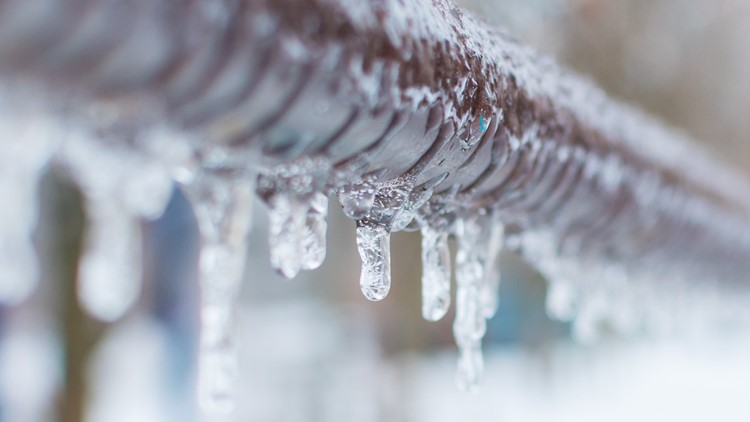Prevent Frozen Pipes in Cold Weather: Professional Tips
Prevent Frozen Pipes in Cold Weather: Professional Tips
Blog Article
Just how do you really feel when it comes to How To Avoid Freezing Pipes?

Cold weather can ruin your plumbing, especially by freezing pipes. Here's just how to avoid it from happening and what to do if it does.
Intro
As temperature levels decline, the danger of icy pipelines boosts, potentially resulting in costly repair work and water damages. Comprehending how to prevent frozen pipes is critical for home owners in cool climates.
Comprehending Frozen Pipelines
What creates pipes to ice up?
Pipelines freeze when subjected to temperatures below 32 ° F (0 ° C) for expanded durations. As water inside the pipes ices up, it expands, taxing the pipeline wall surfaces and potentially causing them to rupture.
Risks and problems
Frozen pipes can result in water system disturbances, property damages, and pricey repair services. Burst pipes can flooding homes and trigger comprehensive structural damages.
Indications of Frozen Pipes
Recognizing frozen pipes early can prevent them from bursting.
Exactly how to identify icy pipes
Search for reduced water flow from faucets, uncommon odors or noises from pipelines, and visible frost on subjected pipelines.
Avoidance Tips
Protecting prone pipes
Wrap pipes in insulation sleeves or use heat tape to safeguard them from freezing temperatures. Focus on pipelines in unheated or external locations of the home.
Home heating strategies
Maintain interior spaces sufficiently warmed, especially areas with plumbing. Open up cabinet doors to enable warm air to flow around pipes under sinks.
Securing Outdoor Plumbing
Yard tubes and exterior faucets
Detach and drain yard hose pipes before wintertime. Set up frost-proof faucets or cover outside taps with shielded caps.
What to Do If Your Pipes Freeze
Immediate activities to take
If you presume icy pipes, maintain taps open to ease stress as the ice thaws. Use a hairdryer or towels soaked in warm water to thaw pipelines slowly.
Long-Term Solutions
Structural changes
Consider rerouting pipelines far from outside wall surfaces or unheated locations. Add added insulation to attic rooms, cellars, and crawl spaces.
Updating insulation
Buy top quality insulation for pipelines, attics, and walls. Proper insulation aids keep regular temperature levels and reduces the threat of icy pipes.
Verdict
Avoiding icy pipelines requires aggressive procedures and quick responses. By understanding the causes, indications, and safety nets, property owners can secure their pipes throughout winter.
5 Ways to Prevent Frozen Pipes
Drain Outdoor Faucets and Disconnect Hoses
First, close the shut-off valve that controls the flow of water in the pipe to your outdoor faucet. Then, head outside to disconnect and drain your hose and open the outdoor faucet to allow the water to completely drain out of the line. Turn off the faucet when done. Finally, head back to the shut-off valve and drain the remaining water inside the pipe into a bucket or container. Additionally, if you have a home irrigation system, you should consider hiring an expert to clear the system of water each year.
Insulate Pipes
One of the best and most cost-effective methods for preventing frozen water pipes is to wrap your pipes with insulation. This is especially important for areas in your home that aren’t exposed to heat, such as an attic. We suggest using foam sleeves, which can typically be found at your local hardware store.
Keep Heat Running at 65
Your pipes are located inside your walls, and the temperature there is much colder than the rest of the house. To prevent your pipes from freezing, The Insurance Information Institute suggests that you keep your home heated to at least 65 degrees, even when traveling. You may want to invest in smart devices that can keep an eye on the temperature in your home while you’re away.
Leave Water Dripping
Moving water — even a small trickle — can prevent ice from forming inside your pipes. When freezing temps are imminent, start a drip of water from all faucets that serve exposed pipes. Leaving a few faucets running will also help relieve pressure inside the pipes and help prevent a rupture if the water inside freezes.
Open Cupboard Doors
Warm your kitchen and bathroom pipes by opening cupboards and vanities. You should also leave your interior doors ajar to help warm air circulate evenly throughout your home.
:strip_icc()/snow-outdoor-faucet-pipes-4af65d1e5e904fb1aa7bf74071fe5d89.jpg)
I ran across that blog post on Helpful Tips to Prevent Frozen Pipes this Winter while browsing on the internet. Do you know about another person who is excited by the subject? Take a moment to share it. Thanks so much for taking the time to read it.
Click Here Report this page